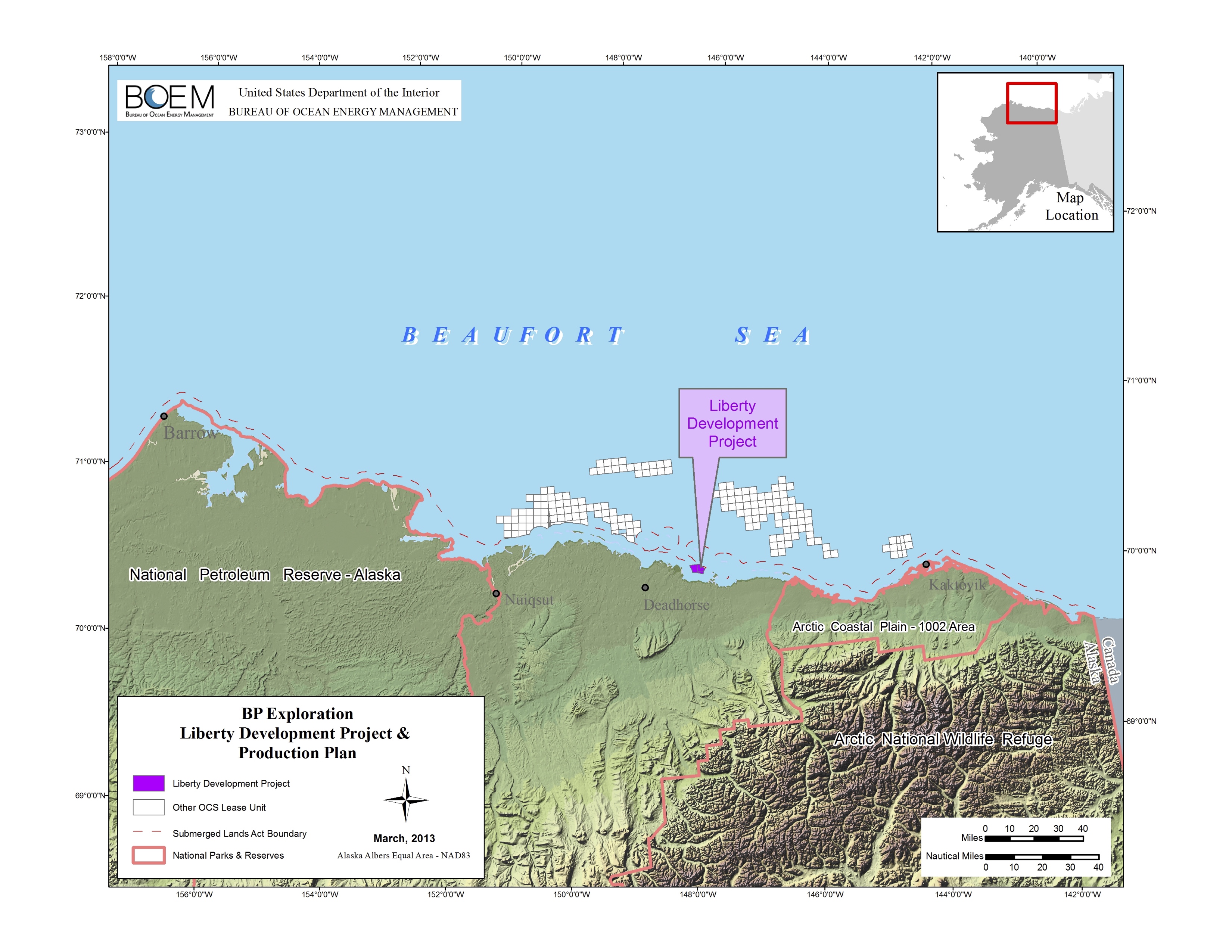Oil development plan in Alaska’s Beaufort Sea gets regulators’ OK
It would be the first offshore Alaska field entirely in federal waters.

The Trump administration on Wednesday announced that it has approved the development plan for the first producing oil field located entirely in federal waters.
The Bureau of Ocean Energy Management granted approval to Hilcorp Alaska LLC for its plan to build and operate the Liberty field in the Beaufort Sea.
“Working with Alaska Native stakeholders, the Department of Interior is following through on President Trump’s promise of American Energy Dominance,” Interior Secretary Ryan Zinke said in a statement.“American energy dominance is good for the economy, the environment, and our national security. Responsibly developing our resources, in Alaska especially, will allow us to use our energy diplomatically to aid our allies and check our adversaries. That makes America stronger and more influential around the globe.”
Liberty holds up to 150 million barrels of recoverable reserves, and if development occurs it could provide 60,000 to 70,000 barrels per day at its peak, according to Hilcorp.
The Hilcorp plan greenlighted by BOEM calls for construction of an artificial gravel island to hold Liberty’s drill sites. The island, to be located about 6 miles offshore and in water that is about 19 feet deep, would be about 9.3 acres in area at the top and would have a footprint of about 24 acres on the seafloor, according to Hilcorp’s plan.
The plan was subject to an environmental impact statement. The final EIS, released by BOEM in August, endorsed Hilcorp’s development concept as the best possible option.
The artificial island concept is not new in Arctic Alaska, officials have pointed out. There are already such islands that are used for the Endicott, Northstar, Oooguruk and Nikaitchuq fields, the first two of which are operated by Hilcorp after acquisition from BP Exploration (Alaska) Inc.
“There are already four other gravel-island facilities off the North Slope, and we consider Hilcorp’s plan to represent a relatively conservative, time-tested approach toward offshore oil and gas development,” Joe Balash, Interior’s assistant secretary for land and minerals management, said in the department’s statement. “Using input from North Slope communities, tribal organizations, and the public, we have developed a robust set of environmental mitigation measures and safety practices that will be applied to this project.”
Among the stipulations that Hilcorp must meet is to cease new drilling into oil-bearing rock at whenever solid sea ice is not present. That is similar to a restriction placed by Alaska officials on the Northstar field, which is located mostly on state leases but includes some federal offshore territory.
There are also seasonal restrictions placed on vessel traffic to avoid interference with local subsistence whaling.
Even with the use of an artificial island, Hilcorp plans extended-reach drilling to reach Northstar oil. The wells would reach up to 6 miles, longer than any drilled to date in Arctic Alaska, according to the company’s plan.
One environmental representative called Hilcorp’s approved plan “a disaster waiting to happen.”
“This project sets us down a dangerous path of destroying the Arctic. An oil spill in the Arctic would be impossible to clean up and the region is already stressed by climate change.” Kristen Monsell, ocean legal director with the Center for Biological Diversity, said in a statement.
Monsell said her organization will “keep fighting this project and any new ones that follow.”
This is not the first development plan for Liberty, and not even the first plan that has won federal regulators’ approval. Liberty has a long history of start-and-stop development.
The reservoir was initially discovered by Royal Dutch Shell in that company’s Beaufort Sea drilling program. BP Exploration (Alaska) Inc. pursued development options for several years before selling half of the Liberty property to Hilcorp in (2014. Hilcorp became the operator. Since then, BP has sold another portion of its share, and Arctic Slope Regional Corp., owned by the Inupiat people of the North Slope, now holds a 10 percent stake in Liberty.
In the years before it sold off half of its Liberty share, BP evaluated ways to develop the field with and without an artificial island.
The most recent plan, approved in 2008 by BOEM’s predecessor, the Minerals Management Service, envisioned no island. Under that plan, BP would produce the offshore Liberty oil with ultra-extended-reach wells drilled from land. But in the aftermath of the Deepwater Horizon disaster and after encountering many technical and economic problems with its efforts to drill the ultra extended-reach wells, BP abandoned that development plan.
BP had submitted an earlier development plan that, like Hilcorp’s current plan, proposed an artificial island to as Liberty’s drilling and production site. That plan, submitted in 1998, was shelved by BP in 2002.
Yereth Rosen is a 2018 Alicia Patterson Foundation fellow.